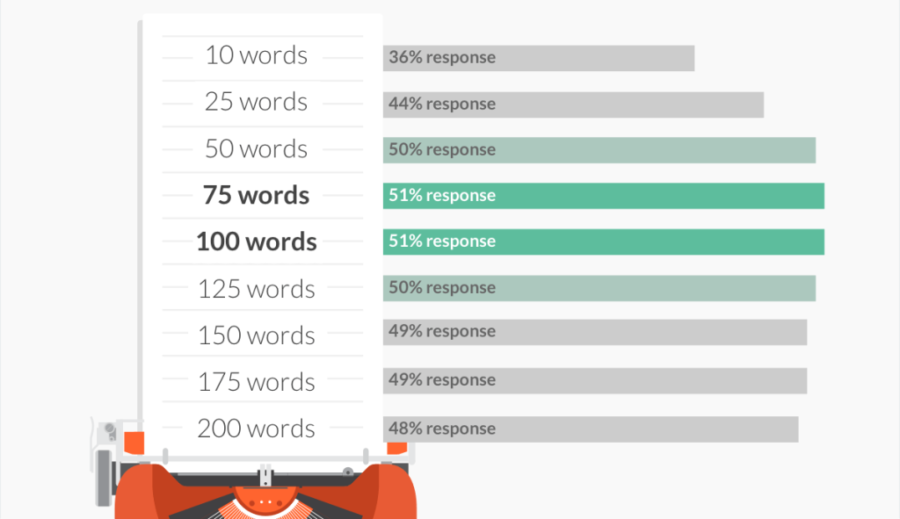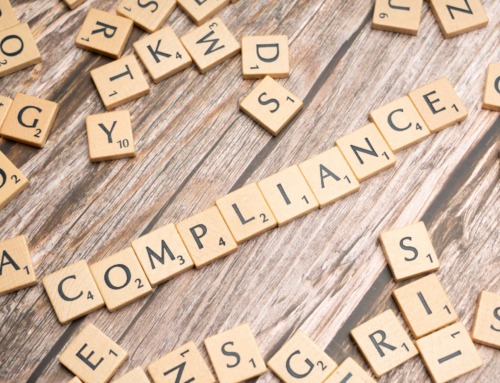 Earlier this month, Boomerang published a report entitled “7 Tips for Getting More Responses to Your Emails.” Based on a review of the previous year, the team at Boomerang—a company that makes productivity software focused on email use—reviewed data around 40 million emails sent by their users. The goal? Determine which factors make an email more likely to get a response.
Earlier this month, Boomerang published a report entitled “7 Tips for Getting More Responses to Your Emails.” Based on a review of the previous year, the team at Boomerang—a company that makes productivity software focused on email use—reviewed data around 40 million emails sent by their users. The goal? Determine which factors make an email more likely to get a response.
Although the company and the information are geared towards email productivity in general and not email marketing in particular, the advice is still useful and applicable because we as the recipients of the billions of email messages sent each day are not treating one kind of email (say, one from a colleague) as all that different from another kind of email (say, one sent from a brand…like you would send as a marketer).
As a company, Boomerang’s goal is to make emails more effective, if I am to put words into their mouths (or paraphrase their website). And the tips they’re deriving from data as they pursue this goal can be put to use by you too, when you’re creating emails with the purpose of marketing products or services.
So I took a deep dive into the data they’ve rounded up, to see how well it does or doesn’t apply to what we do as email marketers. What lessons might we take away from this data to improve the response rates to our campaigns? And I wanted to think through where we might want to be careful not to assume too much.
Enough with the buildup though, right? Let’s see the tips…
Write like a 3rd grader
Boomerang’s data shows emails written to a 3rd grade level got a 53% response rate compared to 45% for an email written to a high school level and 39% written to a college-reading level. But here’s a caveat: What do people expect from your brand? Just because this research says writing to someone in the manner of a third grader will increase your response rate (and in marketing speak we take that to mean opens and clicks) doesn’t mean it’s okay for your brand to do so.
For example, if you’re marketing educational software to people who make critical purchasing decisions for school districts, you probably don’t want to follow this advice. Your emails probably require a somewhat formal and academic tone. Instead, you’ll want to test a variety of approaches to see which one works best for your audience.
Use of emotion
Of all the evidence Boomerang has made available to us with this research, I find this issue of near-neutrality to be fascinating: Their research concludes that emails should be positive but not too positive or be negative but not too negative. It sounds like a delicate balancing act!
I can see where being too positive takes away from your credibility (“You flatterer, you!”) and being too negative just puts people on the defensive (“How dare you?!”). I can also understand how a completely neutral email would fail to engage because there would be nothing compelling about such content. And obviously a slightly positive email is going to appeal to a reader.
But I had to really think about the slightly negative approach and why that would appeal…until I factored in what we call “the fear factor.” Granted the emails used for this study weren’t marketing emails, but in marketing, it can be effective to refer to problems or pain points the recipient might be dealing with. That would give the email a slightly negative tone, and it gets the attention of the recipient because it addresses that problem or pain point and therefore engages them because it might provide a solution.
Write emails that are short but not too short
You know what I’m going to say, right? Test for this one! First off, look at the tiny differences:

The range from 50 words to 200 words is truly negligible, given that we are talking 48% to 51% here. So don’t take this as some kind of hard and fast rule, restricting all email messages to 100 words. Test instead, and discover what works for your audience.
And don’t assume that you can’t have any length at all. Although it’s not reflected in this graph, the article explains that longer messages (500 words to 2,000 words) all had 44% response rates. It’s not until 2,500 words that the response rate drops, to below 35%. And 2,500 words is a long email, period!
Use questions
Do questions engage? Yes! But only if you use the correct amount, as this Boomerang study shows. Again, this is research done on emails in general, not specifically marketing emails, but the advice is likely still relevant. And this study found that between one and three questions will get you a response rate higher than an email with zero questions. That makes sense, right?
Be subjective
The last point in the article says to go ahead and have an opinion, which jibes with the positive and negative findings described above. Completely neutral, factual content is boring, and I’m not surprised that it doesn’t generate as high a response as subjective content.
A big thank you to Boomerang for mining their data for this information (and to Stefano at ClickMail for calling our attention to it). Although it’s not email marketing specific, this is still good advice to at least be aware of for increasing your own response rates!



